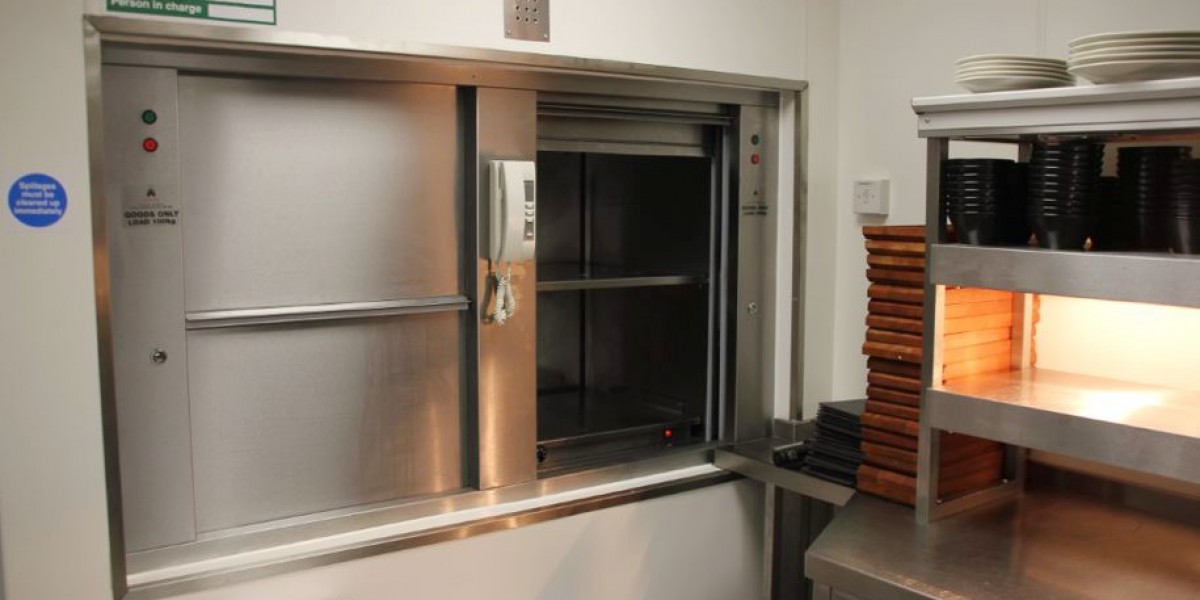Traditional elevator systems often present challenges in space planning, particularly in compact or design-sensitive environments. These systems typically require significant structural modifications, occupy large footprints, and can disrupt architectural aesthetics. For architects and developers seeking minimal invasiveness with functional impact, integrating full-scale elevators into tight spaces can be both costly and limiting.
Enter the Dumbwaiter—a compact, practical, and design-friendly solution that supports vertical transport needs without overpowering the visual or spatial elements of a building. Whether in residential, hospitality, or commercial settings, dumbwaiters address the demand for efficient service mobility while aligning with modern design priorities.
What is a Dumbwaiter?
A Dumbwaiter is a small freight elevator, primarily used to transport goods between floors. Originally popularized in restaurants and private estates, these systems have evolved to fit a wide range of modern applications, including homes, hospitals, libraries, and retail environments.
Typically operated by electric motors and guided via a vertical shaft, dumbwaiters offer a quiet and efficient means of intra-building logistics. Unlike full-sized elevators, they require minimal structural support and can be installed into existing wall cavities or discreetly built into new construction layouts.
Design Integration and Aesthetic Flexibility
One of the greatest advantages of the dumbwaiter is its seamless integration into diverse architectural forms. Whether incorporated into minimalist interiors, luxury hospitality spaces, or curved walls, dumbwaiters preserve spatial aesthetics.
Modern finishes and customizable materials—such as stainless steel, glass, or wood-panel doors—allow dumbwaiters to match surrounding interiors. This makes them particularly appealing for premium kitchens, boutique hotels, or smart homes where design continuity is crucial. Dumbwaiter systems no longer look like industrial boxes—they’re often sleek, compact service lifts that complement high-end design.
Spatial Efficiency and Versatility
Where space is at a premium, every square meter counts. A residential dumbwaiter or commercial dumbwaiter lift can be installed in as little as 0.5 square meters of shaft area, allowing for multiple floors of connectivity without significant sacrifice of floor space.
This compact footprint makes dumbwaiters ideal for:
High-rise kitchens or rooftop dining
Split-level homes and townhouses
Boutique offices or co-working spaces
Health clinics and medical labs
Multi-story retail shops
Additionally, multi-story dumbwaiters can be tailored to fit floor plans with varying access points, ensuring utility without layout compromise.
Key Use Cases in Residential and Commercial Buildings
The range of dumbwaiter applications is expanding across sectors. In residences, a kitchen lift system simplifies the transport of groceries, dishes, or laundry between levels, increasing household efficiency and safety. In commercial settings, a food service elevator supports quick, sanitary delivery between prep areas and dining floors.
Other typical use cases include:
Libraries transporting books between levels
Medical facilities moving samples and records
Retailers lifting inventory to mezzanine floors
Hotels delivering linen or room service efficiently
In each case, the system enhances workflow without interrupting foot traffic or design flow.
Innovations in Technology: From Manual to Automated
The automated dumbwaiter represents a significant step forward from its manually operated predecessors. Today’s systems can include programmable stops, weight sensors, remote control access, and soft-close doors—making them safer, more intuitive, and user-friendly.
Many manufacturers now offer electric dumbwaiter systems with variable speed control, silent motors, and integrated safety locks. Some models are even compatible with smart home ecosystems, allowing voice or app-based operation. These innovations enable smarter vertical mobility, especially in tech-forward homes and buildings.
Materials and Construction Considerations
When planning a dumbwaiter installation, material selection plays a vital role in both aesthetics and performance. Stainless steel is a preferred choice for hygiene and durability, especially in commercial kitchens and hospitals. For homes and high-end interiors, custom door facings and hidden panels help the unit blend into cabinetry or wall surfaces.
Additional considerations include:
Shaft design and fireproofing
Load capacity (typically 50–250 kg)
Vibration and noise insulation
Power requirements and backup systems
Early planning during the architectural design phase ensures smooth installation and long-term reliability.
Compliance, Safety, and Maintenance
While dumbwaiters are compact, they are still subject to regulatory requirements regarding safety and accessibility. Systems should comply with local and international elevator codes, including fire-rated doors, safety interlocks, and overload protection.
Routine maintenance is essential to ensure consistent performance and prolong system life. Most compact service lift systems require minimal servicing compared to traditional elevators, making them a cost-effective choice in the long run.
Why Dumbwaiters Make Sense for Modern Architecture
Dumbwaiters embody the future of subtle, intelligent vertical transport. They provide a reliable solution that bridges form and function—supporting productivity while enhancing space usability and maintaining design purity.
In projects where visual cohesion, spatial efficiency, and discrete utility are paramount, dumbwaiters outperform traditional systems. They’re scalable, customizable, and increasingly essential in both residential and commercial environments.
Conclusion: Dumbwaiters — Compact, Elegant, and Efficient
From their origins in food service to their role in modern multi-story buildings, dumbwaiters are redefining vertical mobility. With advances in automation, flexible installation options, and strong design appeal, they address the evolving needs of today’s architecture and building standards.
For architects, interior designers, and developers looking to optimize space and streamline operations without compromising aesthetics, dumbwaiters offer a compelling alternative to bulky elevators.







